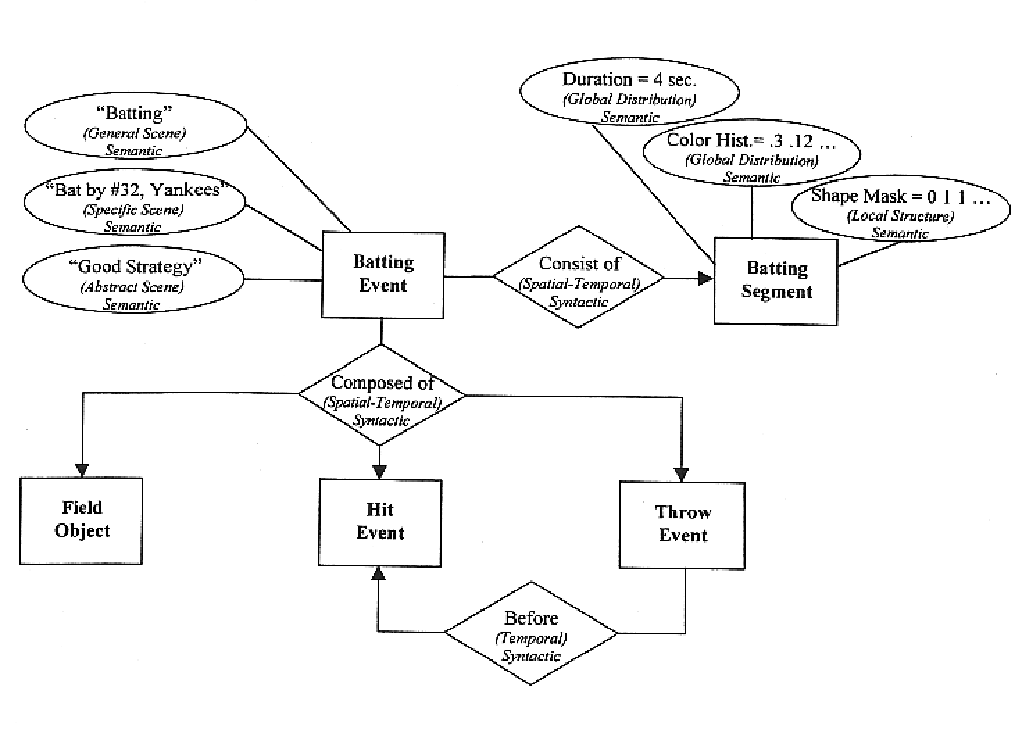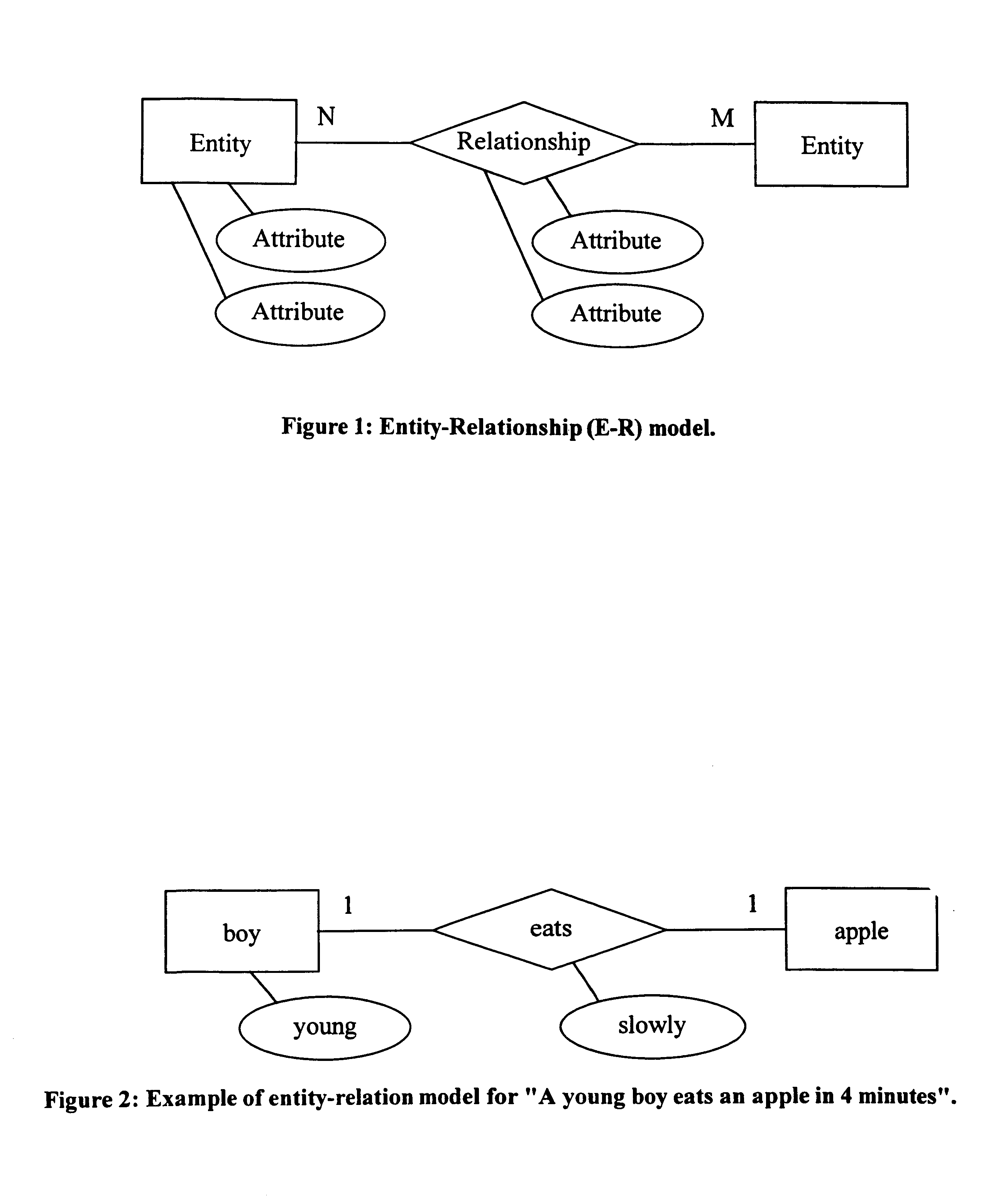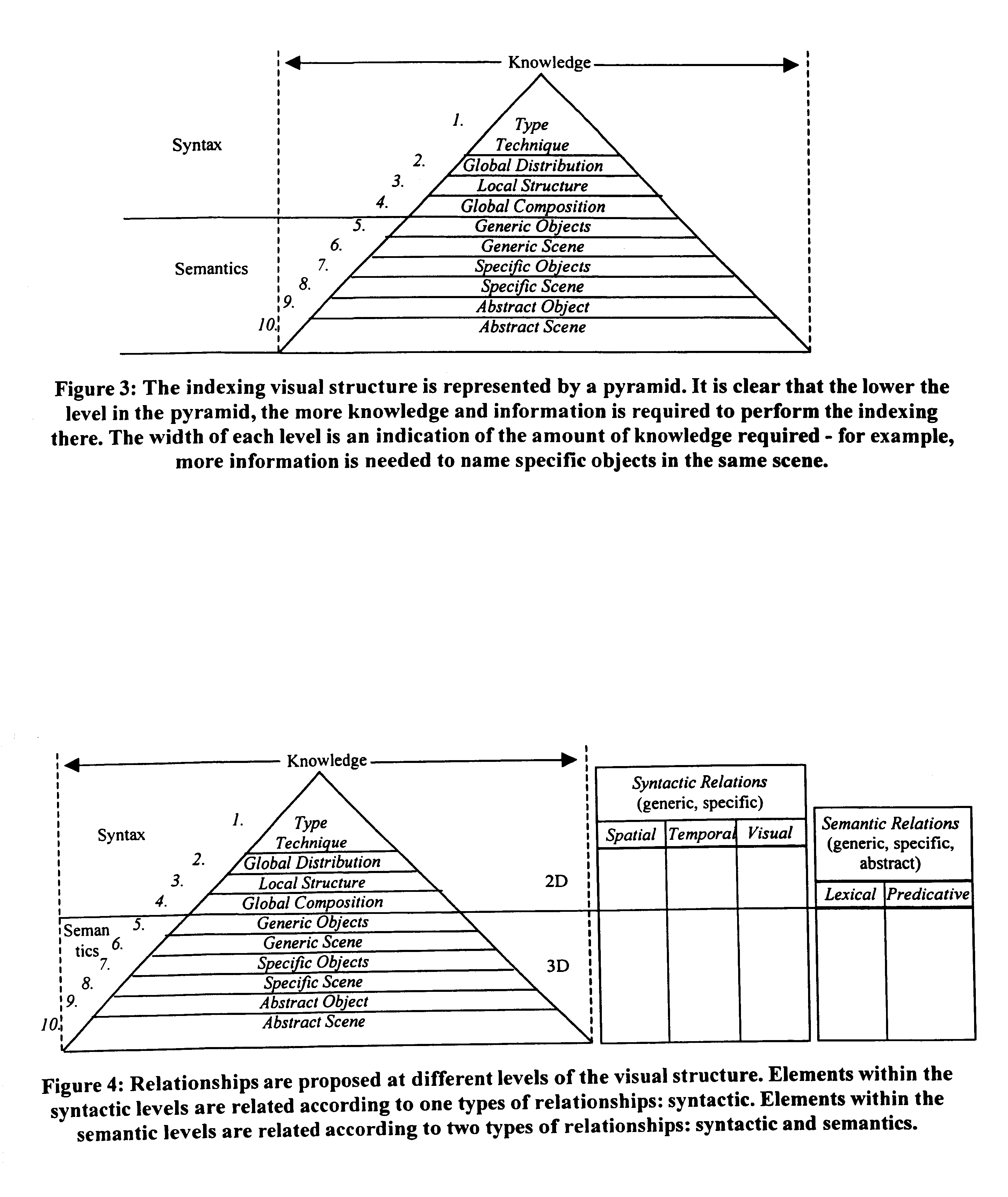Fundamental entity-relationship models for the generic audio visual data signal description
a technology of entity relationships and audio visual data, applied in relational databases, instruments, data processing applications, etc., can solve problems such as difficult to review large quantities of data, classification problems which are often overlooked, and the same is not true for multimedia content, so as to enhance content-sensitive general searches
- Summary
- Abstract
- Description
- Claims
- Application Information
AI Technical Summary
Benefits of technology
Problems solved by technology
Method used
Image
Examples
Embodiment Construction
gs, which are incorporated and constitute part of this disclosure, illustrate preferred embodiments of the invention and serve to explain the principles of the invention.
BRIEF DESCRIPTION OF THE DRAWINGS
[0053]FIG. 1 is a generic Entity-Relationship (E-R) model;
[0054]FIG. 2 provides an example of an entity-relation model for the scenario “A young boy eats an apple in 4 minutes”;
[0055]FIG. 3 represents the indexing visual structure by a pyramid;
[0056]FIG. 4 shows relationships as proposed at different levels of the visual structure;
[0057]FIG. 5 sets forth fundamental models of each proposed type of content element;
[0058]FIG. 6 pictorially displays a baseball batting event image;
[0059]FIG. 7 is a conceptual description of the Batting Event for the Baseball batting event image displayed in FIG. 6;
[0060]FIG. 8 is a conceptual description of the Hit and the Throw Events for the Batting Event of FIG. 6;
[0061]FIG. 9 is a conceptual description of the Field Object for the Batting Event of FI...
PUM
 Login to View More
Login to View More Abstract
Description
Claims
Application Information
 Login to View More
Login to View More - R&D
- Intellectual Property
- Life Sciences
- Materials
- Tech Scout
- Unparalleled Data Quality
- Higher Quality Content
- 60% Fewer Hallucinations
Browse by: Latest US Patents, China's latest patents, Technical Efficacy Thesaurus, Application Domain, Technology Topic, Popular Technical Reports.
© 2025 PatSnap. All rights reserved.Legal|Privacy policy|Modern Slavery Act Transparency Statement|Sitemap|About US| Contact US: help@patsnap.com



